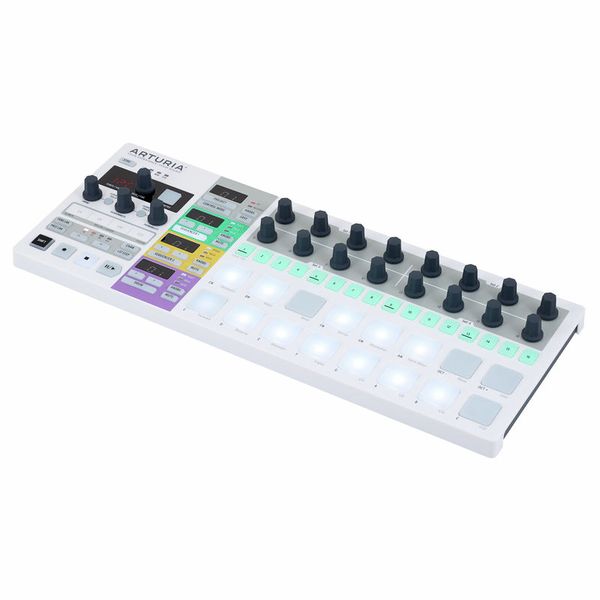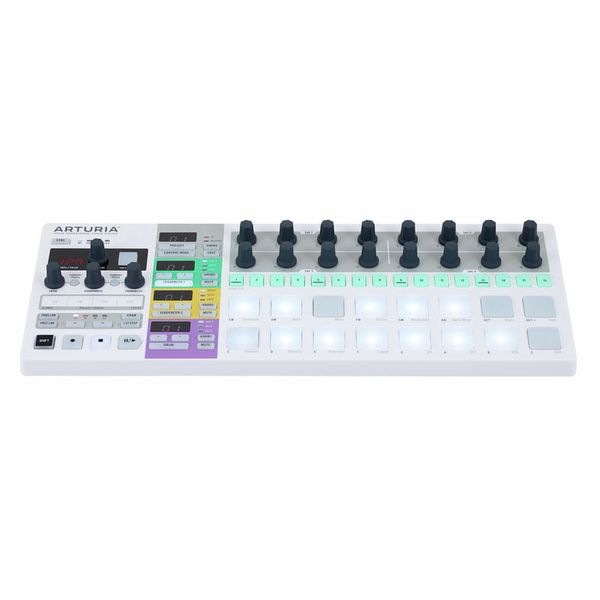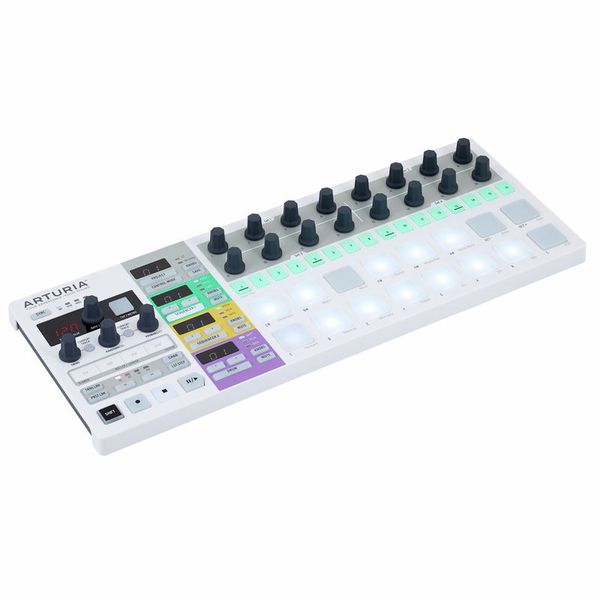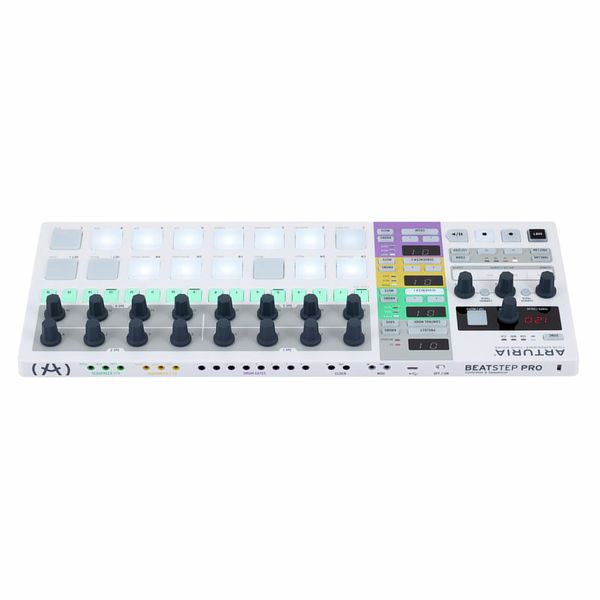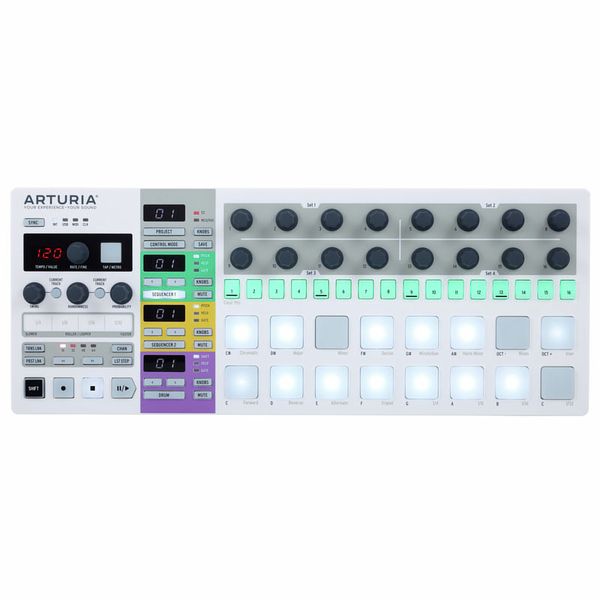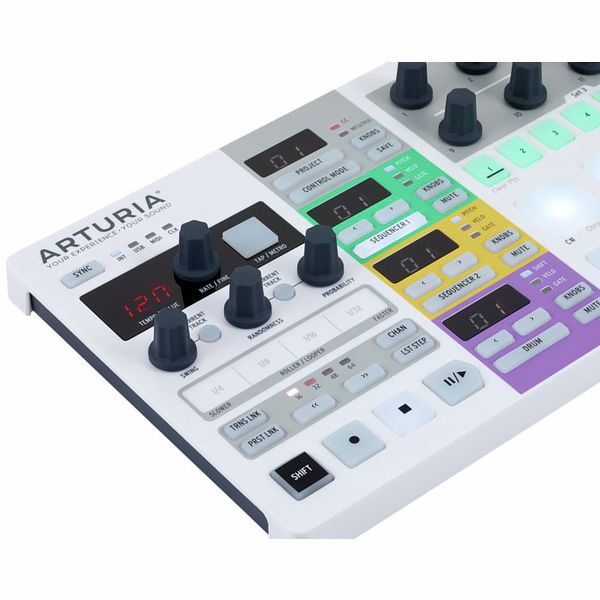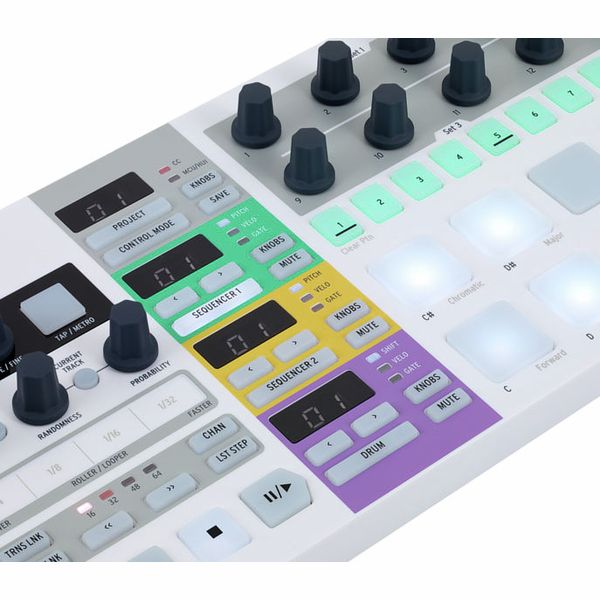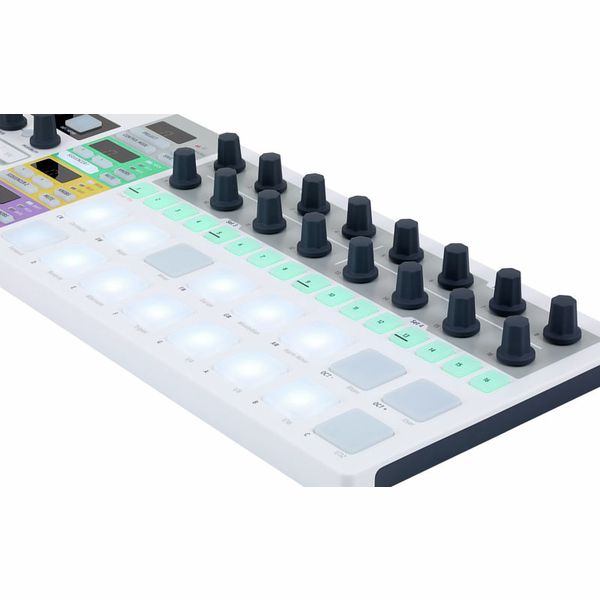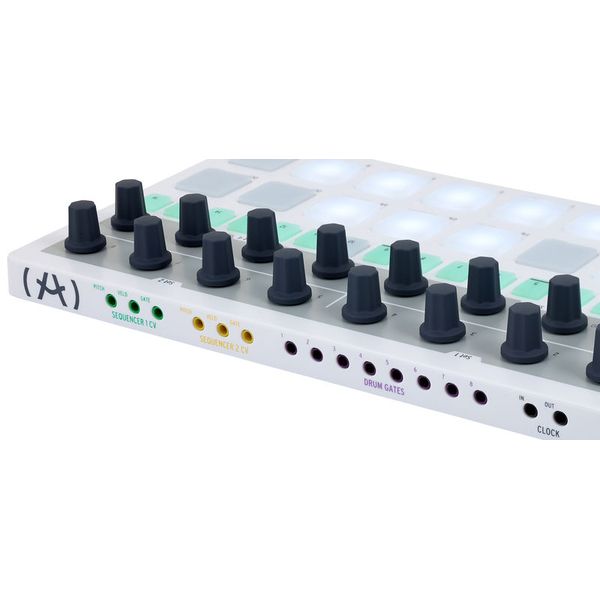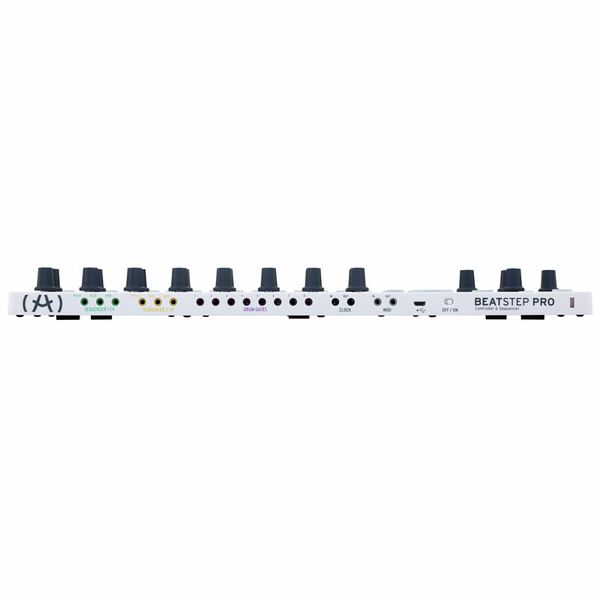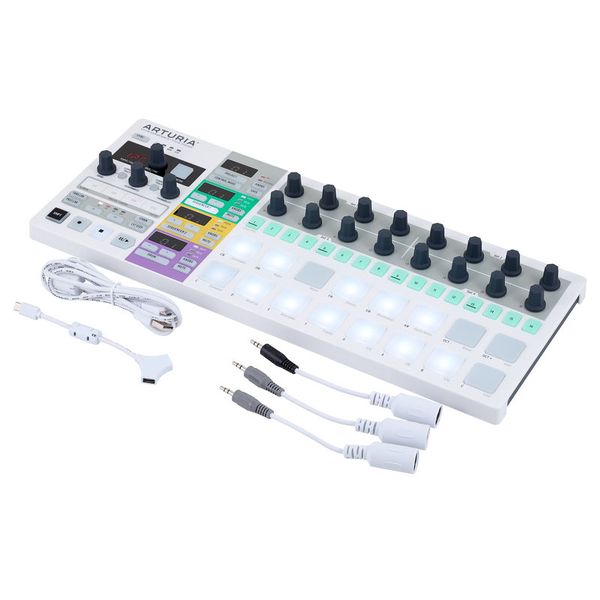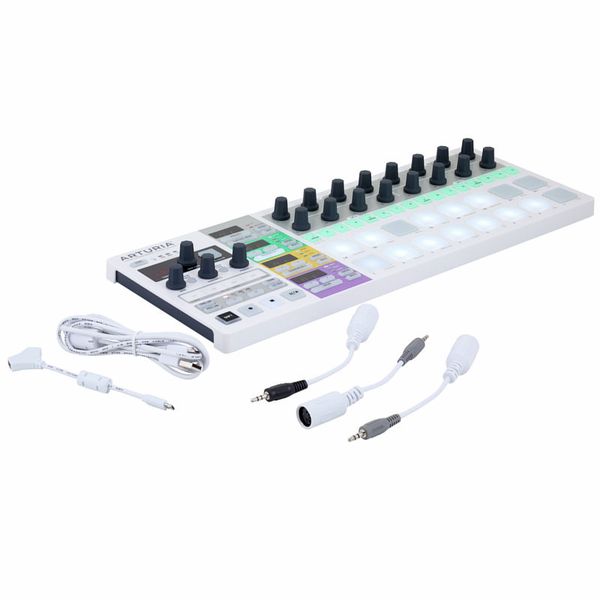If someone had told me three years ago that hardware step sequencers were about to become one of the hottest gear trends, I probably would have recommended a good therapist or at least asked what they were drinking. Granted, my crystal ball generally works well when it comes to technology, but the explosion of modern modular rigs is unprecedented by any standard.
Arturia has been ahead of this curve for a while now, and the success of last year?s original BeatStep (reviewed July ?14) has given them some serious insight into what keyboardists and synthesists really want in a performance sequencer. I use the word ?performance? for a specific reason here, because the step sequencer trend doesn?t target composers and producers per se. Instead, it?s targeted at the growing ranks of gigging electronic artists who want to interact with their sequencing tools in real time as they perform or compose. So Arturia has taken their original concept, listened to their users, innovated wildly, and created a live sequencing product that integrates beautifully with almost any rig.
Overview
The BeatStep Pro?s design is frankly stunning. The front panel is clearly laid out with multiple LED displays, sixteen backlit pads, a 16-step row for programming, 16 knobs, and an array of parameter buttons that are also backlit, making it easy to see what?s going on even on the dimmest stage or DJ booth. Combined with its metal construction, the whole package inspires confidence in a big way.
In terms of its functionality, the BeatStep Pro is based on three tracks of parallel step sequencers: two for pitch-based sequencing and one tailored for drums. These are organized as 16 projects, with 16 sequences per track, which is ample for most live performance requirements. There are no song construction tools of the sort that would let you chain patterns together into larger memory objects, but that?s not the point of the product, so for most users it won?t be an issue. While the front panel covers all of the essential parameters, including dedicated knobs for tempo and swing, some configuration options?like voltage-per-octave and gate formats?are handled by Arturia?s MIDI Control Center software. While some users may gripe at having to connect the BeatStep Pro to their computer to edit these functions, I greatly prefer it to endless key combinations and cryptic LED indicators.
[BREAK]
Connectivity
The BeatStep Pro?s array of connections covers an astonishing range of interfaces for both drum sequencing and note-based patterns. For the step sequencers, there are voltage outputs for pitch, gate, and velocity. The pitch CVs can operate in either volt-per-octave or Hertz-per-volt mode, allowing them to integrate smoothly with both Moog and Roland gear (and of course, Arturia?s own Brute series of analog synths) as well as Korg?s MS-20, which relies on the less common Hertz-per-volt standard. There are also connections for MIDI and USB, allowing the BeatStep Pro to control MIDI hardware and soft synths, respectively.
Naturally, the drum sequencer also works via MIDI and USB, but in an impressive nod to the growing ranks of modular users, there are also eight voltage gate outputs for direct triggering of analog gear. These can be configured for either the V-trig or S-trig standards via the included software as well. In addition, the BeatStep Pro includes DIN sync compatibility, both in and out, so if you?re a lucky owner of classic Roland gear, you?re covered here.
Step Sequencers
There are two step sequencers for musical riffs, each of which can be configured for different outputs, so you can have one control analog gear via the voltage outputs while the other sends its data to your MIDI hardware. On the voltage side of things, I had no problems using the BeatStep Pro to control my beloved Roland System-1m, Doepfer Dark Energy, and Korg MS-20. In all cases, it performed like a champ.
The sequencing tools are extremely comprehensive, so much so that it required keeping my iPad nearby so I could reference the PDF-based manual as I got up to speed with everything. Once I got the hang of the tools, the sequencer sprang to life. For starters, each sequence can be up to 64 steps in length, with step quantization ranging from quarter-notes to 32nd-notes. There?s also an option for triplets, which many other step sequencers lack.
You can program sequences in real time via the Beatstep Pro?s bank of pads, which illuminate to display a one-octave keyboard. As you enter notes, the X0X-style buttons light up to reflect your sequence, which is a lovely touch. From there, you can keep recording overdubs until you perfect your riff, toggling steps on or off as you go. This approach really invites experimentation, especially in conjunction with the BeatStep Pro?s ability to restrain your note options to specific keys and modes, much like iPad compositional tools or Ableton?s Push controller. What?s more, you can transpose your sequences on the fly, which is great fun, regardless of whether you?re composing or performing.
[BREAK]
Alternately, you can enter your note information directly via the knobs, with the note names mirrored in the LED display, which helps greatly. Here, you can also enter gate duration and velocity info via the knobs to finetune your sequences. The gate duration control is more tailored to voltage-based equipment, since MIDI gear isn?t finicky about trigger length. This is extremely handy for ensuring that the events in your sequence don?t get lost due to gates that are too short. That said, the velocity control is another huge plus when working with modular gear, as it?s essentially a second, parallel set of voltages that can be applied to destinations like filter cutoff or the second oscillator in a hard-sync patch.
Once you?ve got your sequences programmed, the BeatStep Pro?s performance features come into play. In addition to the aforementioned ability to transpose your sequences on the fly, you can change the sequence direction from forward to backward to alternating, all in real time. You can also instantly change the last step of a sequence, allowing you to quickly shift from a half-bar loop to a full measure, or to create interesting polyrhythms with more exotic sequence lengths.
As if that weren?t enough, Arturia also included two unique performance features that really set it apart from the pack. The first is a small ribbon controller that allows you to drop in rolls and stutter effects, with different results based on your finger position and how you slide it along the ribbon. The second is a very cool randomization algorithm that can be fine-tuned via two knobs: one for the degree of randomness and the other for ?Probability,? which determines how often the randomization is applied to your sequence as it cycles. What makes this feature so musical is that fact that the random notes are derived from your sequence, so the effect is always musical and relevant, with no awkward clashes.
Adding to the versatility of these performance options is the ability to apply them to either of the two sequences independently, or linking them, so that they?re tied together as a whole. The only caveat, if you can even call it that, is the fact that it definitely takes some time to get the hang of everything, to ensure that your performances are fluid and seamless.
[BREAK]
Drum Sequencer
The Beatstep Pro?s drum sequencing tools are just as compelling as its dual sequencers and function in a similar manner. Here, you have 16 discrete drum sequences that can be composed in real-time or via the step sequencing row. The output of the sequencer can be assigned to any of the outputs: voltage, MIDI, or USB. Because there are only eight gate outputs for triggering voltage-based gear, you can also use the upper row of pads to control additional drum sources, via either of the other output options.
Eurorack owners will appreciate the copious CV and gate I/O, all on 1/8" jacks along the rear panel.
Image placeholder title
Programming drum sequences is a breezily straightforward process, with no real surprises if you have any previous experience with drum machines. That said, there are several added amenities that allow for really precise control over your grooves. For example, you can use the knobs to dial in exact gates when working with voltage-controlled equipment, an essential for getting accurate triggers.
Specific velocities can also be set via the knobs, which allows for some really detailed hihat and shaker patterns. Finally, the knobs can be used to shift timing offsets for each of the drums on a per-step basis. These shifts deliver some really funky and/or humanizing results, like allowing you to push or pull your snares or claps on the two and four. Kudos to Arturia for their attention to detail on this point, as it really takes the rhythmic feel of the BeatStep Pro up a notch.
As for performance features, you can quickly mute individual drums, with the added bonus that the mute is deactivated on lifting your finger off the button?a huge benefit when it comes to timing. Additionally, the randomization and roll features also apply to the drum grooves, so your patterns can constantly shift and evolve as they cycle. In my tests, this was most effective when set to very small amounts, as the results with more extreme settings can be a little too random.
Performance Control
While the BeatStep Pro?s focus is squarely on sequencing, it also serves double-duty as a flexible control surface, which is a wonderful bonus. In this mode, each of the 16 knobs send out MIDI continuous controller information while the pads send note messages. What?s more, the BeatStep Pro can also perform in accordance to the Mackie HUI protocol. I?m an Ableton Live user, so with my configuration, the two rows of knobs served as level and pan controls, while the step sequencing buttons worked as solo and mute buttons. These can be shifted through your mixer channels in groups of eight, via the left and right buttons on the front panel. Moreover, the BeatStep Pro?s transport controls are also integrated into the system, so you can actually do a lot via this schema without touching your mouse. Good stuff.
[BREAK]
Conclusions
All in all, I was blown away by the value of the Beatstep Pro. For a street price of around $250, you get a trio of incredibly powerful step sequencers that can integrate with pretty much any imaginable rig, real-time performance features that are both impressive and intuitive, and a control surface for your MIDI and DAW needs. As with the best tools, some of these features are easy to learn but tricky to master, but exploring the possibilities is half the fun with a product like this. Whether you?re a live performer looking to add intelligent improvisation to your shows or a modular fanatic in need of additional rhythmic options, Arturia?s BeatStep Pro has you covered.
Snap Judgment
PROS Three performance sequencers with extensive real-time control options. Compatible with a wide variety of interface standards, including CV/gate, MIDI, USB and Roland DIN sync. Also doubles as a control surface with 16 knobs, 16 pads, and Mackie HUI integration. Included software allows for thorough customization. Roadworthy construction.
CONS No printed documentation. No song construction tools.
Bottom Line
A powerful but affordable sequencing nerve center for those who own modular gear.


